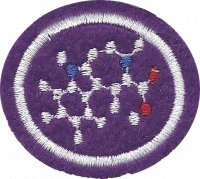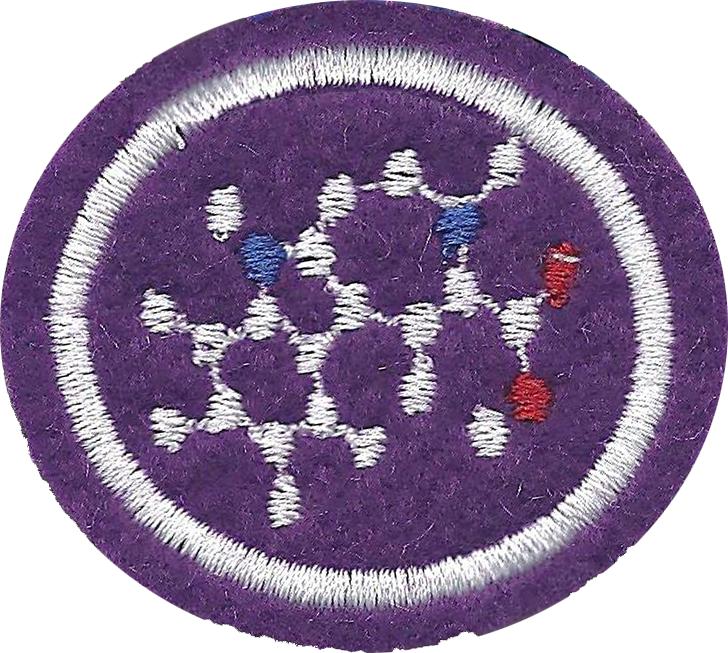AY Honors/Biochemistry/Answer Key
1
1a
A carbohydrate is a molecule that is present in living organisms consisting of carbon, hydrogen, and oxygen atoms.
1b
Lipids are a group of molecules that include fats, waxes, sterols, Vitamin A, Vitamin D, Vitamin E, Vitamin K, monoglycerides, diglycerides, triglycerides, phospholipids. Lipids store energy, used in binding protein targets, and structural components of the cell membrane.
1c
Fatty Acids are carboxylic acids with a long hydrocarbon chain. They can be saturated or unsaturated.
1d
Proteins consist of one or more long chains of amino acid residues. They are large biomolecules. Proteins have a lot of functions in organisms such as DNA replication, catalyzing metabolic reactions, responding to stimuli, and transporting molecules from one to another.
1e
A peptide is a compound consisting of two or more amino acids that are linked in a chain. They are short chains of amino acids.
1f
Enzymes are biological molecules that act as catalysts. They accelerate the chemical reactions.
1g
Amino Acids are used by cells in the body to build proteins.
1h
Nucleic acids can be DNA, RNA, mRNA, and TRNA. They help replicate cells, and build proteins.
1i
1j
A triglyceride is an ester which is a formation of carboxylic acid and alcohol. Triglycerides are the main body fat in mammals and vegetable fat.
1k
2
3
4
5
It is a metabolic pathway that results in the generation of glucose from certain non-carbohydrate carbon substrates; eg protein breakdown products (certain amino acids), glycerol from breakdown of triglycerides (lipids) and from other steps in metabolism including pyruvate and lactate.
6
brain cells
7
Oxaloacetate is an intermediate in both these biochemical pathways, in the production of glucose from pyruvate and the Krebs Cycle . it is also involved in the urea cycle, the glyoxylate cycle, amino acid synthesis, and fatty acid synthesis.
8
The citric acid cycle (also known as the Krebs Cycle after its discoverer Hans Adolf Krebs) is a crucial metabolic pathway that takes the breakdown products from the food we eat (proteins, fats and sugars) and produces three NADH, one FADH2, and one GTP molecule. the NADH and FADH2 are fed into the oxidative phosphorylation (electron transport) pathway producing ATP the body's main energy storage molecule. NADH and FADH generate 2.5 and 1.5 ATP molecules respectively in oxidative phosphorylation. GTP can also be used to form an extra ATP.
Citric acid cycle intermediates also also starting products for many important biosynthetic processes. Fatty acid synthesis and the production of cholesterol, which in turn, is used to synthesise the steroid hormones, bile salts, and vitamin D. Non-essential amino acids proline, glutamine and arginine the last two are converted to form the purines that are used as the bases in DNA and RNA, as well as in ATP, AMP, GTP, NAD, FAD and CoA. Aspartate from oxaloacetate can be converted unto the pyrimidines- thymine, cytosine and uracil, the complementary bases to the purine bases in DNA and RNA, and are also components of CTP, UMP, UDP and UTP. Porphyrins from succinyl-CoA are important components of the hemoproteins, such as hemoglobin, myoglobin and various cytochromes.
9
10
11
The total energy gained from one (six-carbon) molecule of glucose in the citric acid cycle and oxidative phosphorylation equals about 30 ATP molecules. The number of ATP molecules derived from the same number of carbon atoms in a fatty acid chain is 40. So lipids are more efficient for energy storage.
12
13
Essential Amino Acids
There are amino acids that cannot be made by the human body. They only come from food. There are 9 types of Essential Amino Acids. They are isoleucine, leucine, histidine, lysine, methionine, phenylalanine, threonine, valine, tryptophan
Non-Essential Amino Acids
Our bodies make these amino acids. There are 4 types: asparagine, alanine, glutamic acid, aspartic acid.
14
15
Amino Acids forms proteins. They are organic compounds when combined that help build cells. When proteins from the Amino Acids break down they leave Amino Acids. The body uses the amino acids to break down food, grow, repair cells and skin cells. They can be stored and used for energy.
16
17




